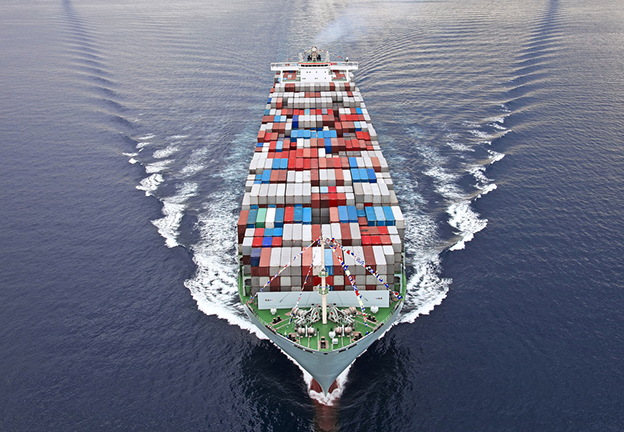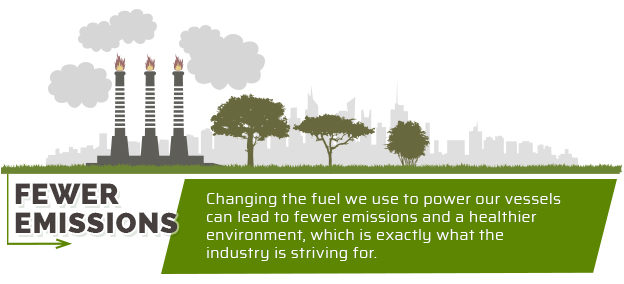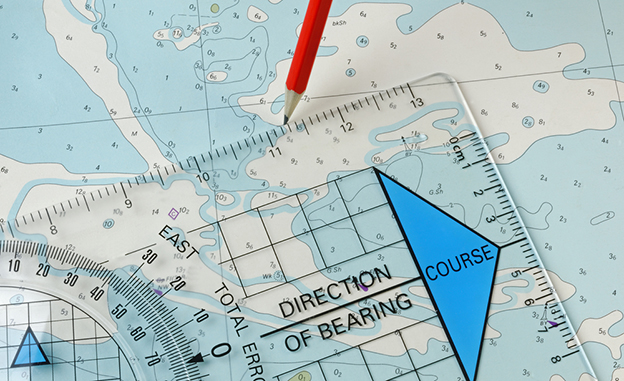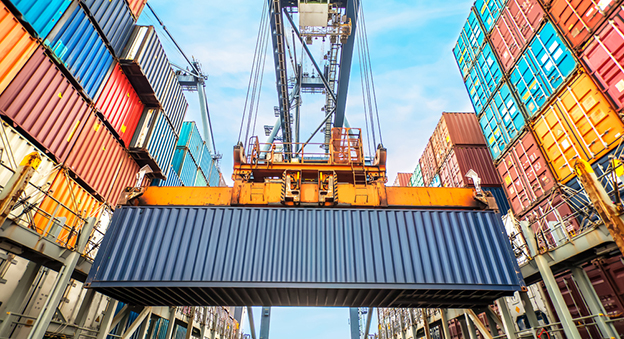
We only have so many nonrenewable resources available to us, and it’s our job to make them last for as long as we can. We can do this by making the most of our renewable resources, changing our methods and using different fuels and materials. Freight and shipping make up one of the largest industries in the world and the effects of this industry are global. Even small changes can make a massive difference and help us protect and preserve the environment.
All industries should be pushing towards greener, environmentally friendly standards, but the freight and shipping industry is one of the heavyweights. The bad news is that the industry is largely unregulated, which makes it difficult to put rules into place and even more difficult to enforce them. There is good news as well, however. The industry has been putting many of the right elements in place to keep the planet alive. Read on and learn about some of the ways the freight and shipping industry is lowering their energy use.
Decarbonization—The push towards decarbonization is proof that the freight and shipping industry is committed to going green, but what does this mean? Burning carbon is bad for the environment, but it’s been considered a necessary evil in the shipping industry for a long time. Fuels that are heavy in carbon produce pollution and harm the environment, so the industry has been striving to remove as much carbon as possible from its fuels. By using other types of fuels, cargo carriers can reduce their carbon footprint and pave the way for a healthier planet.
Better Port Management—From the way the port is built to the way the operators handle their businesses, there are countless ways that the freight and shipping industry can go even greener. Building new ports with recycled materials and training employees to subscribe to environmentally friendly practices will go a long way towards reducing your business’s carbon footprint. Workers should be able to load and unload ships as quickly as possible to improve efficiency, but there is also a shift in philosophy towards better oversight for port management in general. Better port management helps lower energy use, which is crucial when it comes to such an influential industry.
Fewer Emissions—The freight and shipping industry is cracking down on emissions in order to protect and preserve the environment. Many shipping and freight companies are examining their oil in an effort to make more environmentally conscious decisions, and stricter regulations are in the works to ensure that operators use the correct type of fuels for their operations. Between marine craft, trucks and airplanes, a great deal of toxins is emitted into the air. Changing the fuel we use to power our vessels can lead to fewer emissions and a healthier environment, which is exactly what the industry is striving for.
Improved Recycling—When a vessel’s lifespan has come to an end and it can no longer stay in use, it will be scrapped. Ships can be extremely large, so there’s a lot of material to deal with when you take one out of service. Cleaning up ship scrapping methods makes the shipping industry much greener. Ships should only be scrapped when they’re no longer safe or efficient to operate, and any of the recyclable materials that come from them should be reused or repurposed. Under no circumstances should any scrapped ship materials end up back in the water as waste. Through better scrapping and recycling processes, we can get the most out of our ships that are no longer in service, and we can put more materials back into circulation.
Upgraded Engines—The types of fuel we use in our ships, trucks and airplanes make a huge impact on our environment, and the types of engines we use make all the difference. Switching to multi-fuel engines allows vessels to use liquid and gaseous fuels, which can reduce emissions–especially when combined with filtering techniques. When your fleet’s engines can handle different types of fuel, your business can put a dent in the impact of its emissions. If the whole shipping industry upgrades their engines and is careful about their fuel use, we can look forward to a much greener future.
Slowing Down—You want to get your products to your customers as quickly as possible, as customers love to get their items as soon as they can after ordering. As it turns out, you can save a great deal of fuel by traveling a bit more slowly. While this may impact the customer’s waiting time, it can cut down on fuel expenses by a wide margin. This is especially true when it comes to shipping over the water. By slowing your speed by just a couple of knots, you can end up saving money and reducing your emissions, which helps the shipping industry go greener.
Ballast Water Management—Ballast water is what ships use to stay stabilized when they travel across the ocean, and it’s stored in tanks at the bottom of the ship. The water gives the ship some extra weight so it can handle the turbulence of the ocean, but it also presents some problems for marine life. Different species are indigenous to different parts of the world. When ships take in ballast water, they take in marine plants and fish as well. Then, when they discharge the ballast water, they put these plants and fish into a new environment. This is bad for the living species collected in the ballast water as well as the local water that receives the foreign ballast discharge. By practicing better ballast water management, the shipping industry aims to become more environmentally friendly and protect local waters from invasive species.

More Durable Materials—Durable materials offer benefits for transporters, manufacturers and the environment. Working with more long-lasting materials prevents the need to purchase new products, which slows down the demand for virgin materials. This is great for your carbon footprint and it will make your business more environmentally friendly, which may appeal to your customers. It also means that you won’t have to spend money to replace your pallets, boxes and crates, which saves your business a good amount of money. Durable shipping materials also do a better job of protecting your products, so there’s a smaller risk of shrinkage due to damage, which also saves money.
Use of Solar Power—Harnessing solar energy could revolutionize our world, but everyone needs to be on board for that to happen. Fortunately, businesses can reap the benefits of solar power on their own, and in doing so they can lessen their expenses and their impact on the environment. Solar energy is completely renewable, as the sun shines down on us whether we like it or not. Making use of this energy can make the shipping industry exponentially more efficient, so businesses can save money while protecting the environment.
Less Friction—Even if you’ve thought about all of the above elements before, what you might not realize is that lubricating and coating your hull properly can make a significant difference. The ships you load your freight onto will be traveling at great speeds and friction can become an issue. Using the right paints help reduce this friction, so ships don’t have to use as much fuel to get where they need to go. Combined with slowing down, this can significantly reduce your fuel costs and increase your efficiency. While sailing slowly can help you save fuel, the friction on your hull makes a great deal of difference and can keep your business on schedule and your customers satisfied.
Smarter Routing—One wrong turn can set your whole operation back by a lot, but better routing can eliminate the problem. Modern GPS systems make it much easier to get your trucks on the right path and to their destinations without any delay. Misdirection takes up more time, effort and fuel, which means you lose money as the seconds pass. With quality GPS systems, your drivers should be able to navigate to their destinations without any problems. Use a high-quality GPS system to make sure your drivers know where they’re going at all times.
Three-Dimensional Printing—Every country in the world produces valuable materials, which is one reason the shipping industry is so crucial to our global economy. When you can cut out the shipping costs, however, you can stand to save a great deal of money. With the invention of three-dimensional printing, you don’t have to worry about shipping in the materials you need. Instead, you can print them yourself. If you have a three-dimensional printer at your disposal, you can fabricate your products locally, so you don’t have to worry about the shipping costs. This leads to fewer emissions—and thus, less pollution—and less cost to the business.
Stricter Requirements and Regulations—One of the fallbacks of the shipping industry is that it’s not fully standardized, which presents a range of problems for many businesses. It also makes it more difficult to ensure that shippers are doing their best to reduce their emissions and ship in an environmentally friendly way. By placing stricter requirements and regulations and making sure they are enforced, the shipping industry can greatly reduce its impact on the environment and pave the way for a healthier planet. It tends to be tricky to put new rules into place when you’ve got so many other responsibilities to take care of but taking the time to educate your employees on technology, emissions and IMO compliance goes a long way.
The freight and shipping industry has been making real strides towards using less energy and being more environmentally responsible, but there are still steps to be taken that can further reduce our carbon footprint as a whole. Changing the types of fuel we use and reducing our use of carbon makes for a strong start. Using more long-lasting shipping materials as well as employing more efficient management methods can be a difference maker, too. Further reducing emissions and shaping up our recycling process will continue to improve the industry’s efficiency. We now have the technology to create engines that can take different types of fuel, and we can instruct our captains and drivers to operate their vehicles more slowly. Ships are being coated with coatings and lubricants that reduce friction, we’re changing the way we handle ballast water and we’re working on stricter regulations for the industry entirely. Solar power, smarter routing and three-dimensional printing will also help the freight and shipping industry reach its goals of environmental responsibility.


















